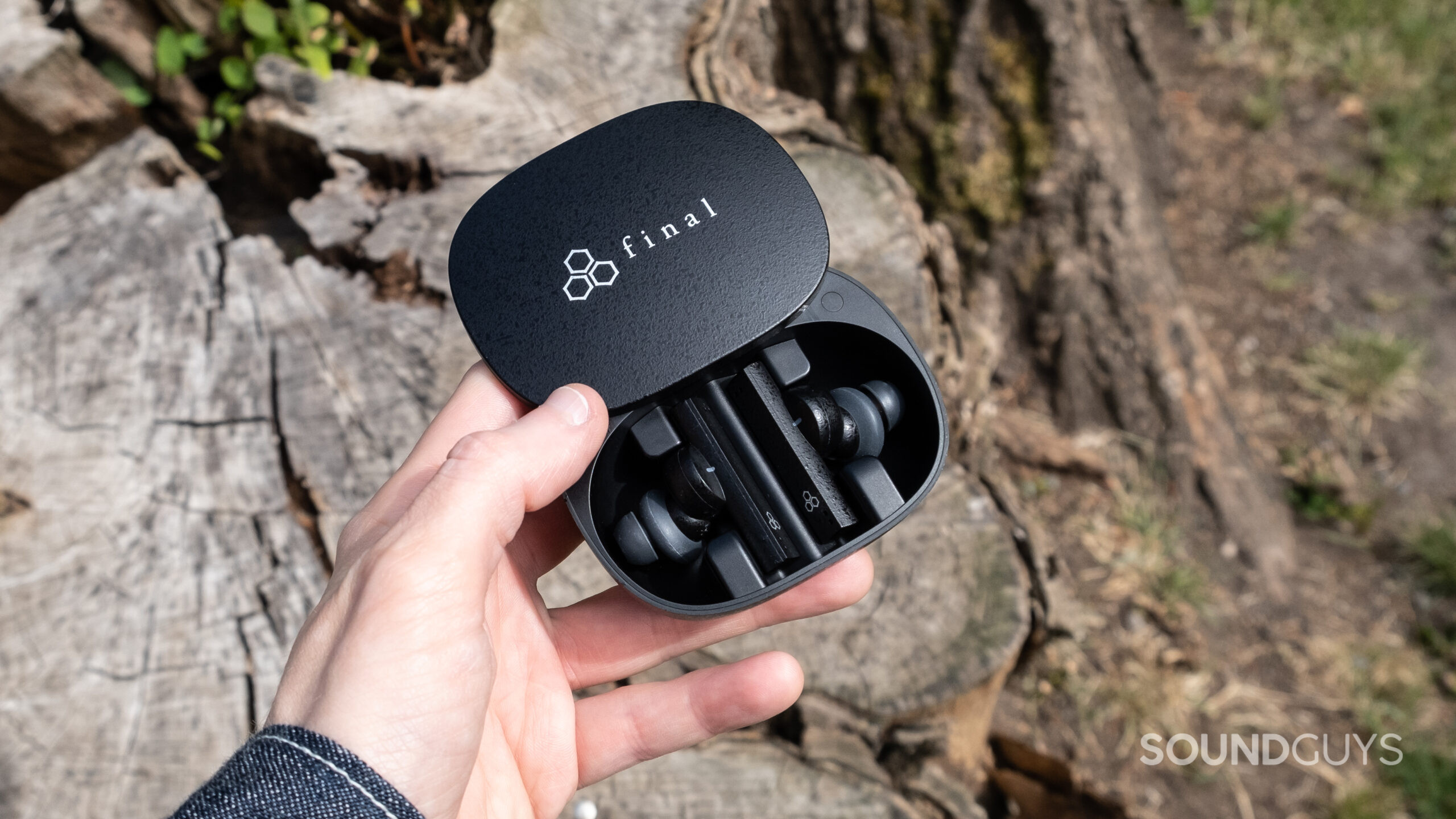Affiliate links on SoundGuys may earn us a commission. Learn more.
Final ZE8000
04/07/2023
Original: $349
Case: 77mm x 61mm x 40mm
63g
FI-ZE8DPLTWBL
FI-ZE8DPLTWWH
Yes
You may have heard of Final if you frequent audiophile stores or have been trawling the depths of the internet’s many discussions on niche audio products. If you haven’t, Final is a Japanese company with some appealing earbuds touting promising specifications. The ZE8000 tops Final’s lineup of active noise canceling (ANC) true wireless earbuds. We dive in with the Final ZE8000 to assess how well they work and if paying more gets you more.
Editor’s note: this is the first version of the article. Updates will follow as the market changes.
Folks with money to burn who want to hear more bass in their wireless buds might enjoy these. The Final ZE8000 may also appeal to those who want aptX for their Android devices.
What’s it like to use Final ZE8000?
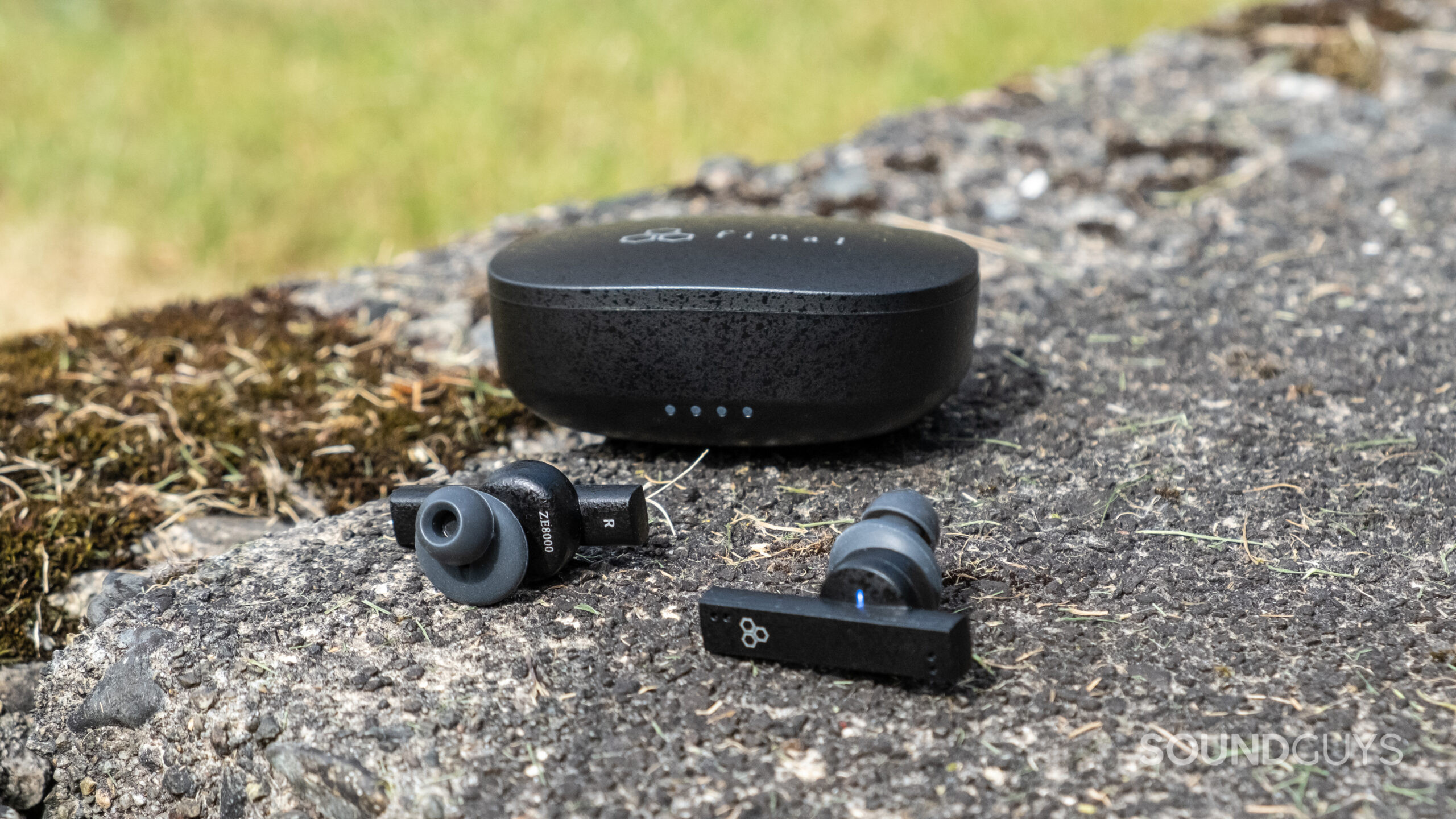
The Final ZE8000 are long-stemmed earbuds with touch controls on each stem’s flat, outside plane. They have a pleasant textured plastic finish available in black or white. Along with the buds, charging case, and cable, you get five pairs of ear tips with integrated stabilizers that fit like sleeves. These are easy to change to try out different sizes. I settle on the size small for both buds, but they don’t fit well and don’t create a good seal. Sizing up to the medium, the ear tips fit worse and cause discomfort but seal slightly better, and sizing down to the extra small, the ear tips themselves fit better but seal the worst. Having the stabilizer and ear tip in one means the fit will likely be a compromise. At this price, one expects more rather than less customization in fit.
In addition to the integrated ear tips and stabilizers, you get ten filters to fit over the drivers to keep dust and gunk out. A weighty metal tool is included to help change the filter screens. The dust filters are a nice addition for keeping things hygienic.
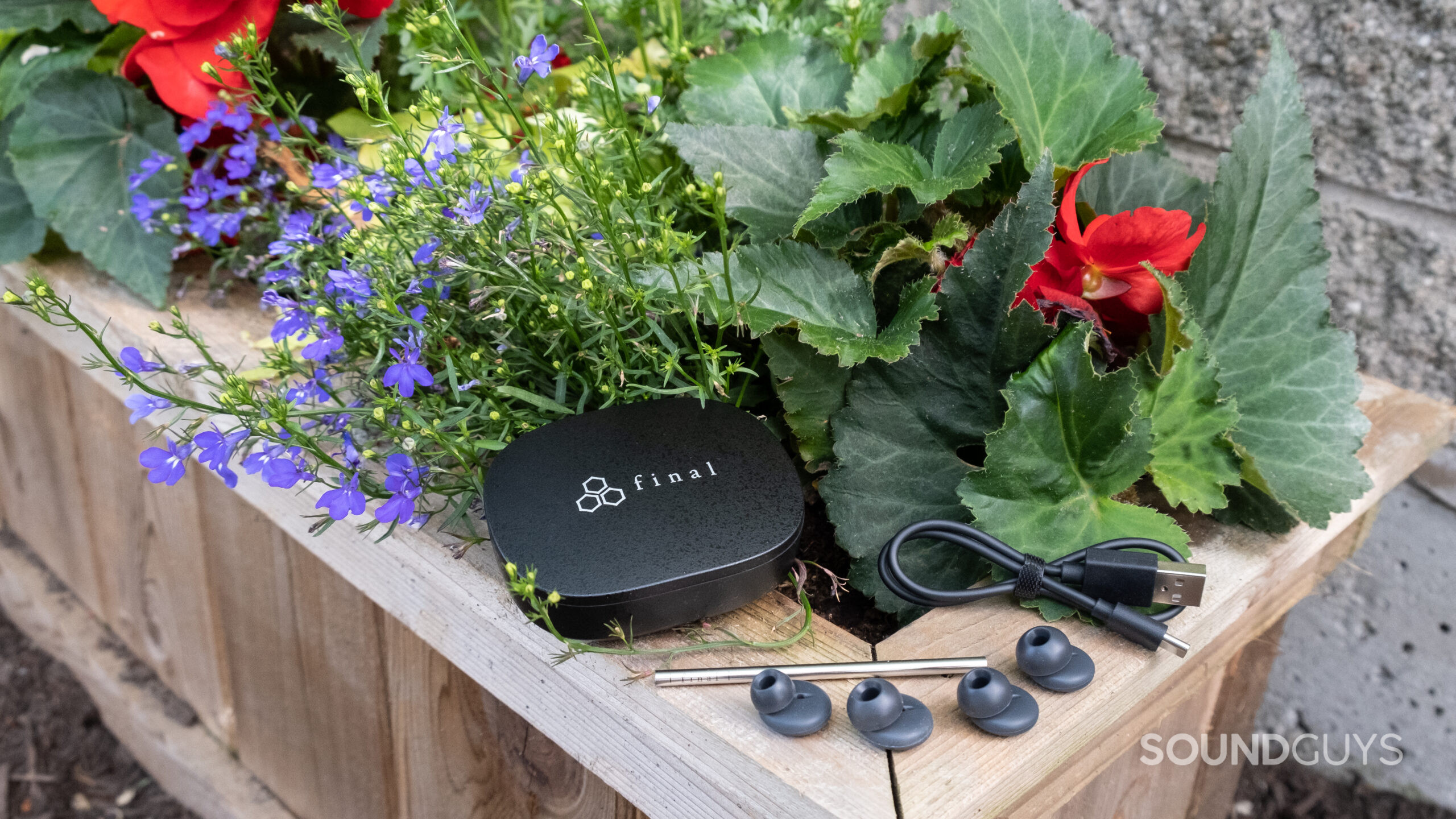
The lightweight buds stick out of my ears quite a bit. The controls react with decent sensitivity, although removing them from the case usually triggers a command accidentally, and there’s no in-ear detection. It seems like an oversight with such a long stem to place the capacitive surface right outside of where the buds fit into your ear. Alternative input methods would prevent you from hearing the thump of the touch control, such as buttons along the top or placing the touch control surface elsewhere along the stem — as seen on the Status Between 3 ANC. It’s not so much a problem for single taps, but if you try to do a triple tap at speed to play the previous track, it’s just annoying to hear.
Tapping the touchpad five times directly on your ear to activate your smart assistant is loud and unpleasant enough to make you feel not so smart.
Despite the relatively large case, the ZE8000 package feels surprisingly light. The textured plastic case requires care because it is a little slippery. Once you discover that the lid doesn’t hinge but slides, it does slide open quite pleasingly, and you can do this single-handedly. The lid locks into place when opened and shuts firmly. A USB-C charge port resides on the back, and four indicator lights on its front display the battery charge status. There’s also a circular button for factory resetting the buds, discreetly tucked on the right side, only visible when you open the case.
The ZE8000 has an IPX4 rating which will protect against sweat. You probably wouldn’t want to work out with earbuds that sell for this much money without additional safeguards like ear hooks, but the IPX4 rating is welcomed for hot days.
Yes, you can use the Final ZE8000 in mono. Generally, you can remove one earbud from the case once connected or simply replace the unwanted bud. Sometimes if the ZE8000 has previously been in mono mode, the buds will appear as two separate devices. To fix this, try re-pairing them, or have your device forget the ZE8000 and pair as if they were brand new.
How do you control Final ZE8000?
Most of the Final ZE8000 controls are directly accessible on the earbuds. Some require setup in the Final CONNECT app, such as customizing the step sizes for altering your volume. The controls cannot be remapped.
| ACTION | Left earbud | Right earbud |
|---|---|---|
| ACTION One tap | Left earbud ANC or Ambient sound | Right earbud Play/pause |
| ACTION Two taps | Left earbud Decrease volume Answer/end call | Right earbud Increase volume Answer/end call |
| ACTION Three taps | Left earbud Skip to previous track | Right earbud Skip to next track |
| ACTION Touch and hold | Left earbud Refuse call | Right earbud Refuse call |
| ACTION Five taps | Left earbud Siri or Google Assistant | Right earbud Siri or Google Assistant |
The controls are basically the same in mono mode, except volume control and track skipping, which are absent in mono. For the most part, the touch controls work with appropriate sensitivity. Somewhat frustratingly, the controls don’t register any inputs if you don’t use the ZE8000 touch controls for a while when connected to an iPhone. This defeats the point of direct controls.
Should you use the Final CONNECT app for the Final ZE8000?
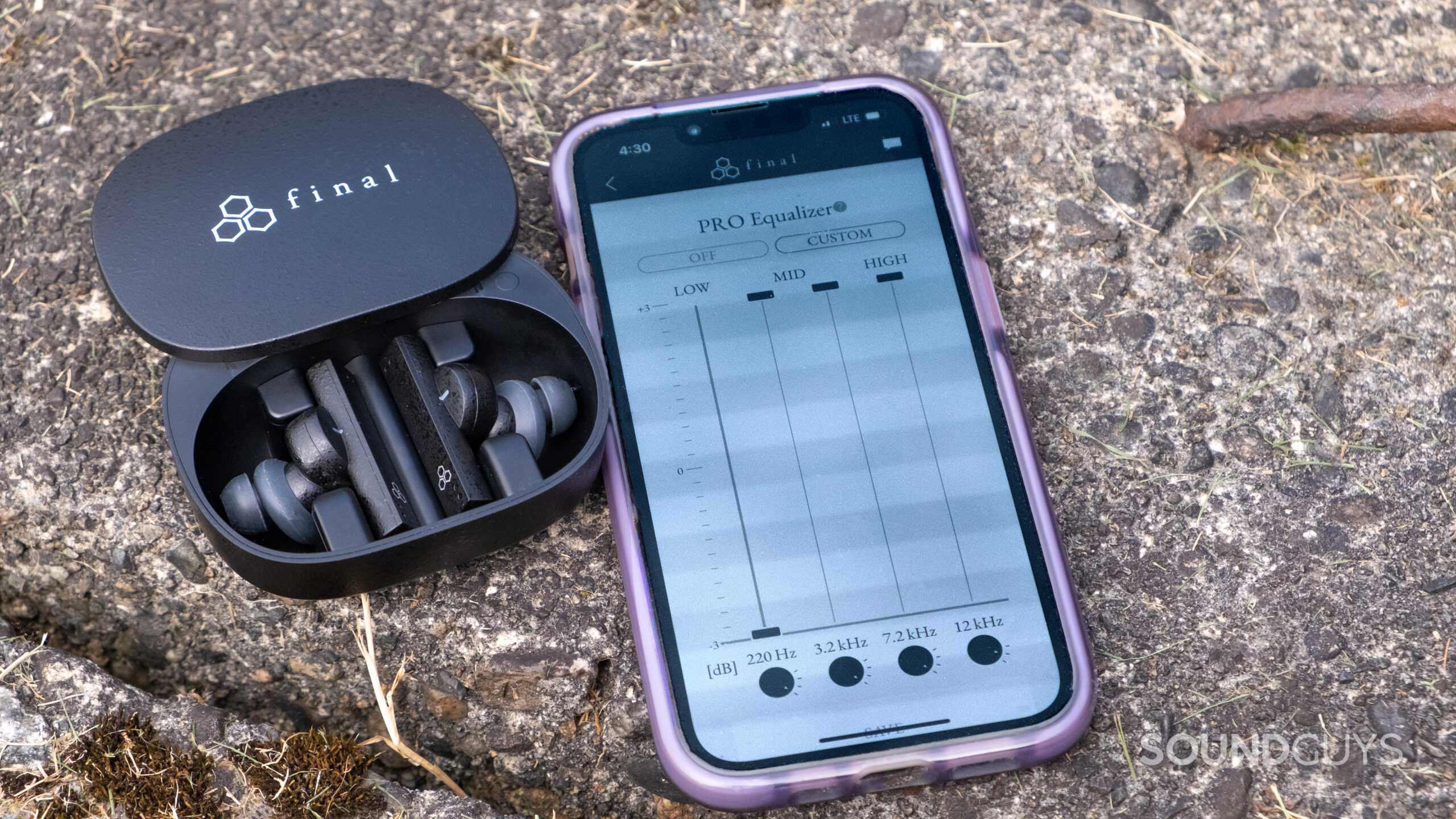
You definitely want the Final CONNECT app to partner with the Final ZE8000, available on Android and iOS. The app is basic, but it’s where you access updates and can directly control listening modes. You can only choose Ambient or ANC modes with the earbud controls, but with the Final CONNECT app, you can also select Wind-Cut and Voice Through. You can’t reassign the earbud controls, and like the Bose QuietComfort 45, you don’t get a standard listening mode.
One of the key features is the equalizer. You can adjust up to four bands, but Final also lets you dial in the center frequencies you want to alter. By default, these are 35Hz, 350Hz, 1600Hz, and 10kHz; however, you can choose two other frequencies to adjust instead. This is pretty handy but sadly limited to only a 3dB boost or cut, which isn’t a lot of wiggle room.
8K Sound is also only accessible in the Final CONNECT app. Essentially, this is a form of digital signal processing (DSP) to improve your audio. Leave it on unless you’re concerned about the drain on the battery life. 8K Sound borrows a term from video to suggest your audio will be in higher definition, although the significance to audio here is unclear.
How does the Final ZE8000 connect?
The Final ZE8000 connects using Bluetooth 5.2 with aptX, aptX Adaptive, AAC, or SBC codecs. iPhones will default to AAC, which is fine. With my Samsung tablet, the ZE8000 defaults to aptX at 16-bit.
It’s not the easiest experience trying to get the ZE8000 to connect to the iPhone. Ostensibly, you should be able to slide back the case lid and wait for the ZE8000 to enter pairing mode. This can take up to 10 seconds, a long wait by current standards, but it connects more quickly to Android devices. More than once, the buds lose their connection and need futzing with, such as replacing the earbuds in the case and re-pairing to get stereo working.
Other bugaboos include initially experiencing persistent difficulties getting the Final CONNECT app on an iPhone to recognize the ZE8000. Strangely, only after pairing to an Android device (and disconnecting) does the app recognize the Final ZE8000 on the iPhone. Subsequent reconnections on the iPhone do not always occur automatically. Instead, opening Bluetooth settings and manually selecting the ZE8000 in the list of previously paired devices is necessary to connect it. The ZE8000 plays much nicer with Android.
The experience overall provides a few frustrations that harken back to the bad old days of Bluetooth.
To pair the Final ZE8000, follow these steps.
- Enable Bluetooth in your settings.
- Open the case, leave the buds in place, and wait for one of the earbuds to flash blue and red.
- Select the ZE8000 from the Bluetooth menu.
- Open Final CONNECT.
- Select the + and wait for the app to recognize the ZE8000.
How long does the Final ZE8000 battery last?
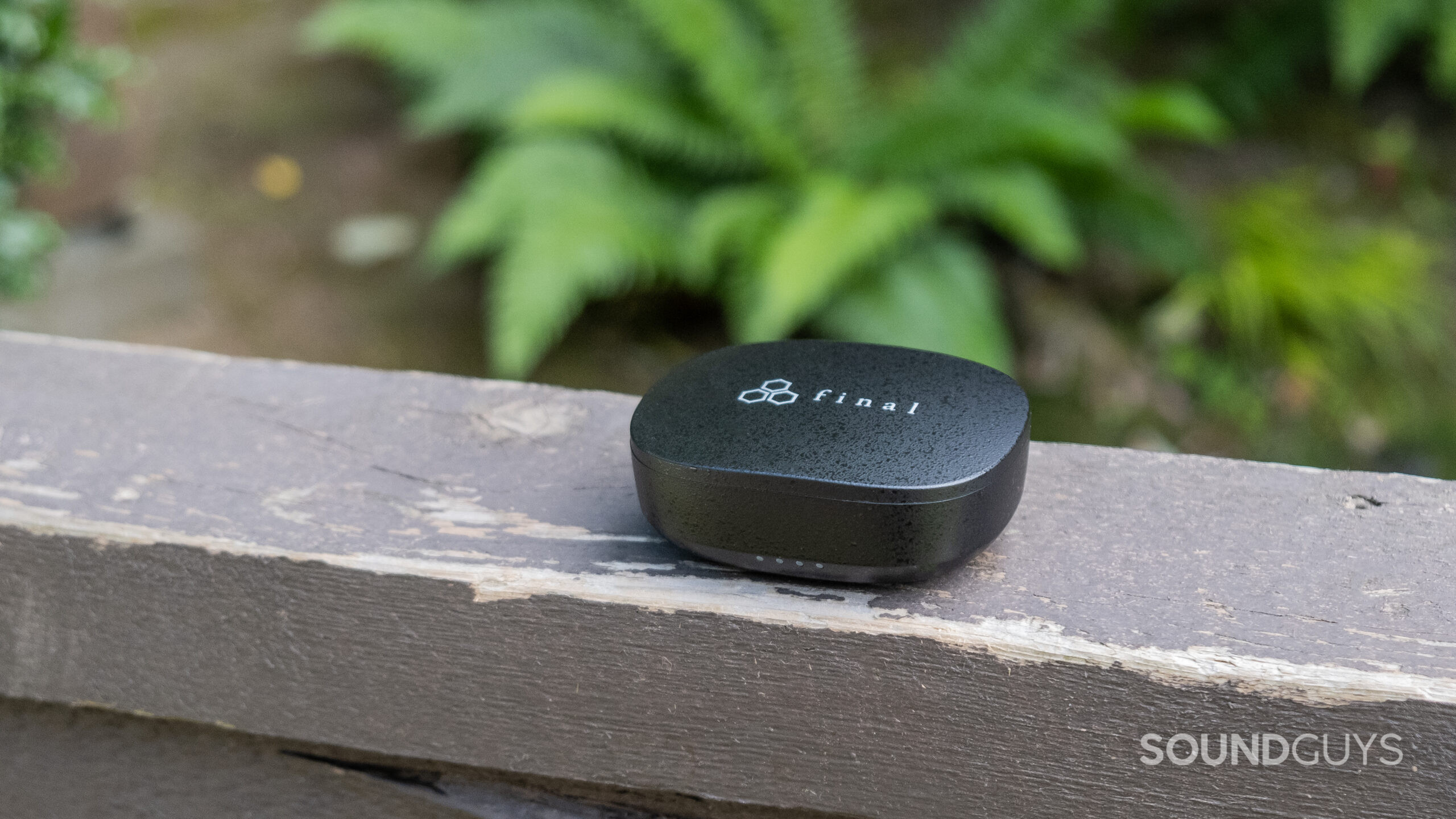
Our standardized battery test shows the Final ZE8000 lasts 4 hours, 42 minutes with ANC enabled. This is close to Final’s estimate for battery life. Considering the ANC is rather weak, and you can’t turn it off, it’s an okay result but not the best. You can stretch the battery life by deselecting the 8K Sound feature.
It takes 90 minutes for the earbuds to fully charge from empty and 2 hours to completely charge the 420mAh battery charging case.
Charging the Final ZE8000 for 5 minutes yields up to 45 minutes of play time with the buds.
How well does the Final ZE8000 cancel noise?
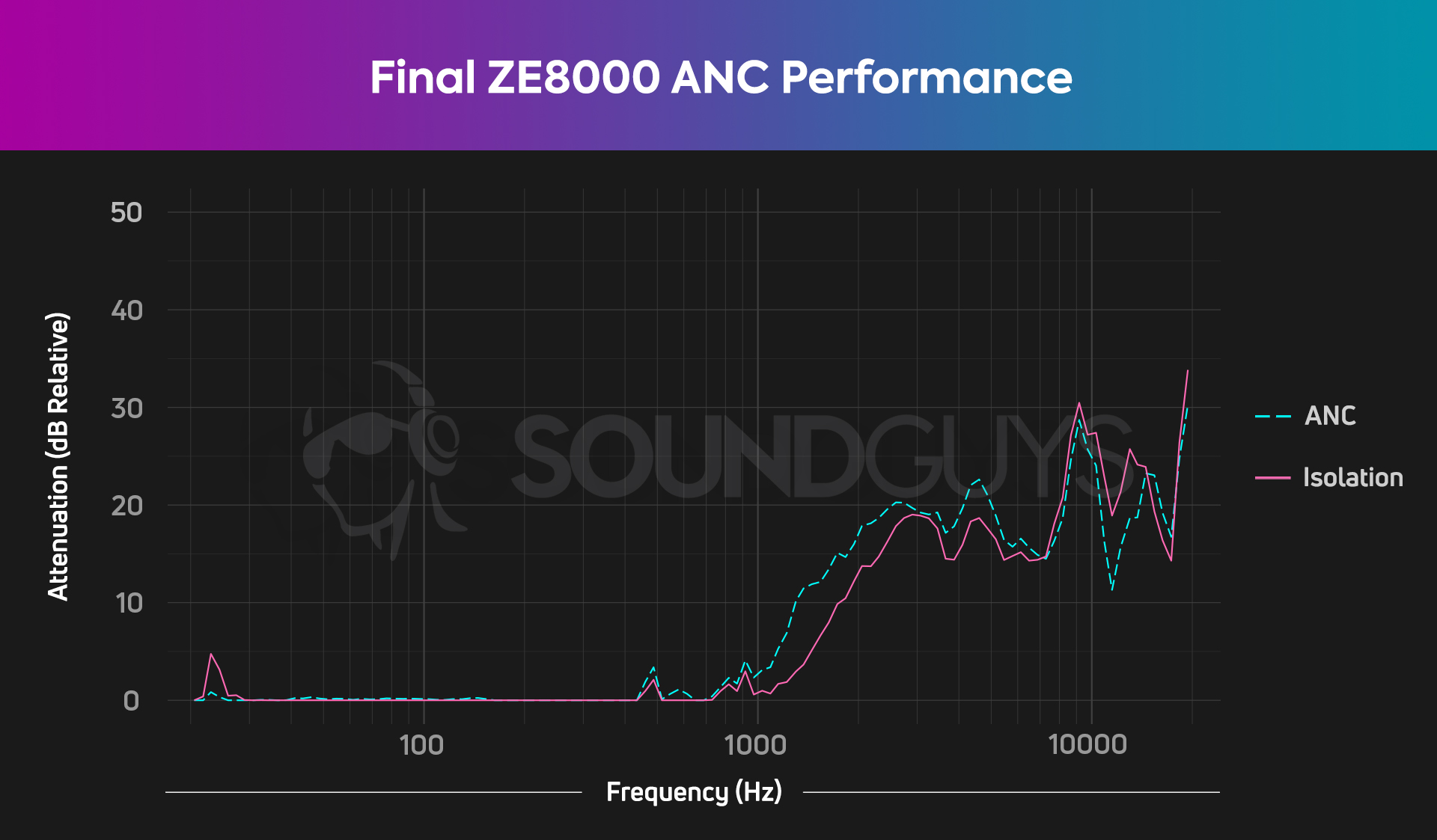
With the firmware tested (1.8.1), the Final ZE8000 do not have very effective active noise canceling (ANC). It also does not isolate very well, affecting the listening experience with the ZE8000. This is a letdown and a far cry from the best examples for a set of ANC earbuds.
It’s possible that the included ear tips fit you better than either the Bruel & Kjaer 5128 we use to measure or my ears, which would provide a better experience. However, central to this issue is that the ZE8000 utilizes specialized ear tips that integrate the ear tip with a stabilizer sleeve that covers part of the earbud’s housing. You can’t buy any third-party ear tips to improve the isolation and in-ear fit.
Your audio will compete with noise from the outside world more than expected. I manage to have an entire conversation while wearing the ZE8000 with ANC on, making the Ambient and Voice Through modes seem unnecessary. Yes, other people’s speech gets muffled, but not enough to block it out sufficiently. You might find yourself turning up the volume to overcome noise from your surroundings: my iPhone warns about high volumes frequently with the ZE8000 since it’s easy to lose track of how loud I’m listening when the ANC and isolation aren’t up to par.
How does the Final ZE8000 sound?
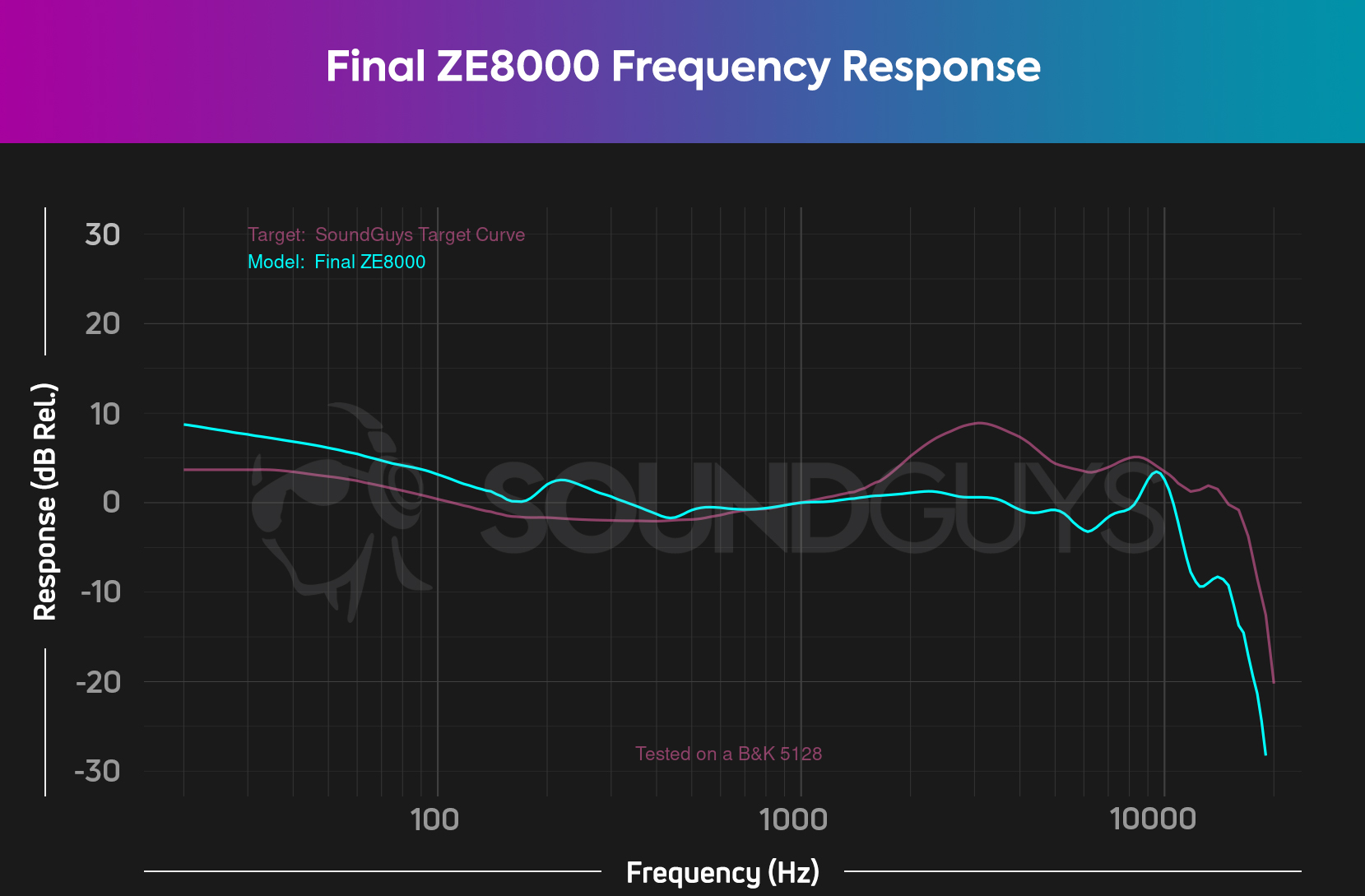
Typically we expect earphones to provide a frequency response that attempts to mimic what we hear when listening to loudspeakers, which includes the boost around 3kHz naturally produced by our ears. The Final ZE8000 doesn’t do this. The default frequency response under-emphasizes frequencies in the range 2kHz to 9kHz by between 4dB and 9dB and has a narrow peak at 10kHz, which is a little odd.
Because of this, the ZE8000 provides a sound that overemphasizes bass frequencies and lacks output in the upper midrange, resulting in a lack of clarity. Since the ZE8000 buds do not seal to the ears reliably, performance will vary greatly from one person’s ears to another’s, depending on fit. In the user manual, Final suggests trying different ear tips to get the buds to fit better if your low end is lacking, and that’s solid advice, but it didn’t help me in this case.
Lows, mids, highs
Listening (in a quiet environment) to Every Day’s A Lesson In Humility by Suki Waterhouse, Belle and Sebastian late at night reveals a decent stereo image. The track’s cymbals chk-chk as expected, although they sound a bit incomplete, like high-pitched blips, getting muddled with the tambourine hits. Bass guitar and low toms come through well enough, but pushing the buds in more to simulate a better fit, these elements get way too loud relative to everything else. Perhaps Final expects the ZE8000 to fit more loosely in the ears.
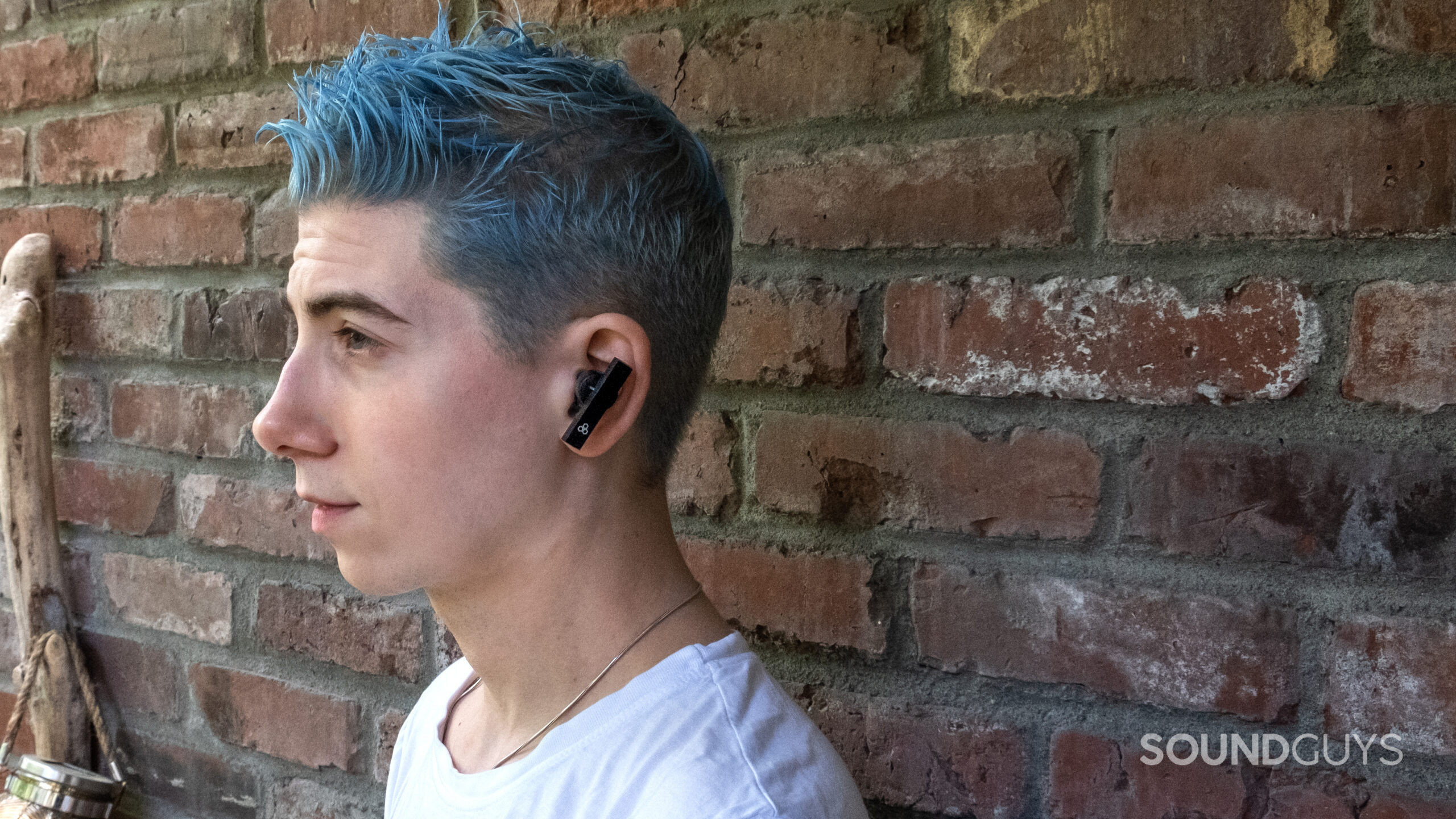
Suki Waterhouse’s voice comes through well, as does the trebly rhythm guitar. In the first verse, her voice has an audible lisp, perhaps an artifact of overzealous de-essing, and it’s interesting the ZE8000 reveals that. However, the overall balance of this track is a long way off what I’m familiar with, with organs and other trebly keys too quiet relative to other instruments and backing vocals occasionally becoming hard to hear. Meanwhile, the snare is challenging to disambiguate from the simultaneous handclaps. Overall it doesn’t sound bad, but it sounds uneven. In addition, the bass response of the ZE8000 is highly sensitive to correct positioning, and the looser fit can make achieving and retaining the correct angle of the fit precarious.
Listening to the same track in a noisier environment (outside on a residential street) supplies a different experience: in particular, the low end is much harder to hear. This is entirely expected when you don’t have a good enough ear seal.
Shifting the earbuds even slightly completely changes how much bass comes through, from arguably too much to a lot. When worn correctly, this tuning would appeal to bass heads.
You can equalize the Final ZE8000 to bring down the bass and bring up higher frequencies., but note that the Final CONNECT equalizer can only boost or cut frequencies up to 3dB. Considering that the ZE8000 outputs at about 8dB too quietly at 3kHz (for us), you’ll need to use a different equalizer.
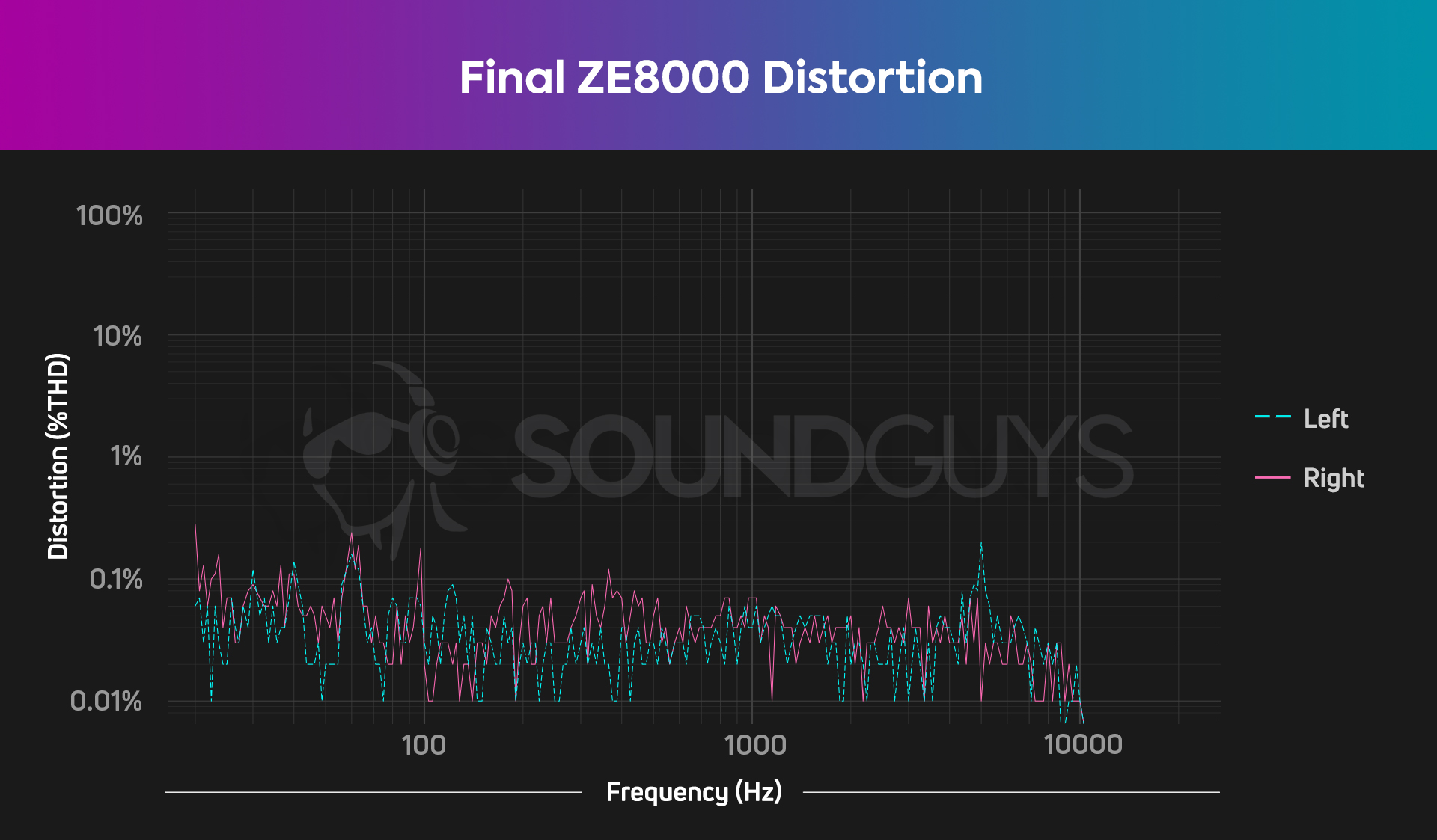
Yes, the Final ZE8000 buds have low distortion (THD), which we’d expect, considering these are expensive.
Can you use the Final ZE8000 for phone calls?
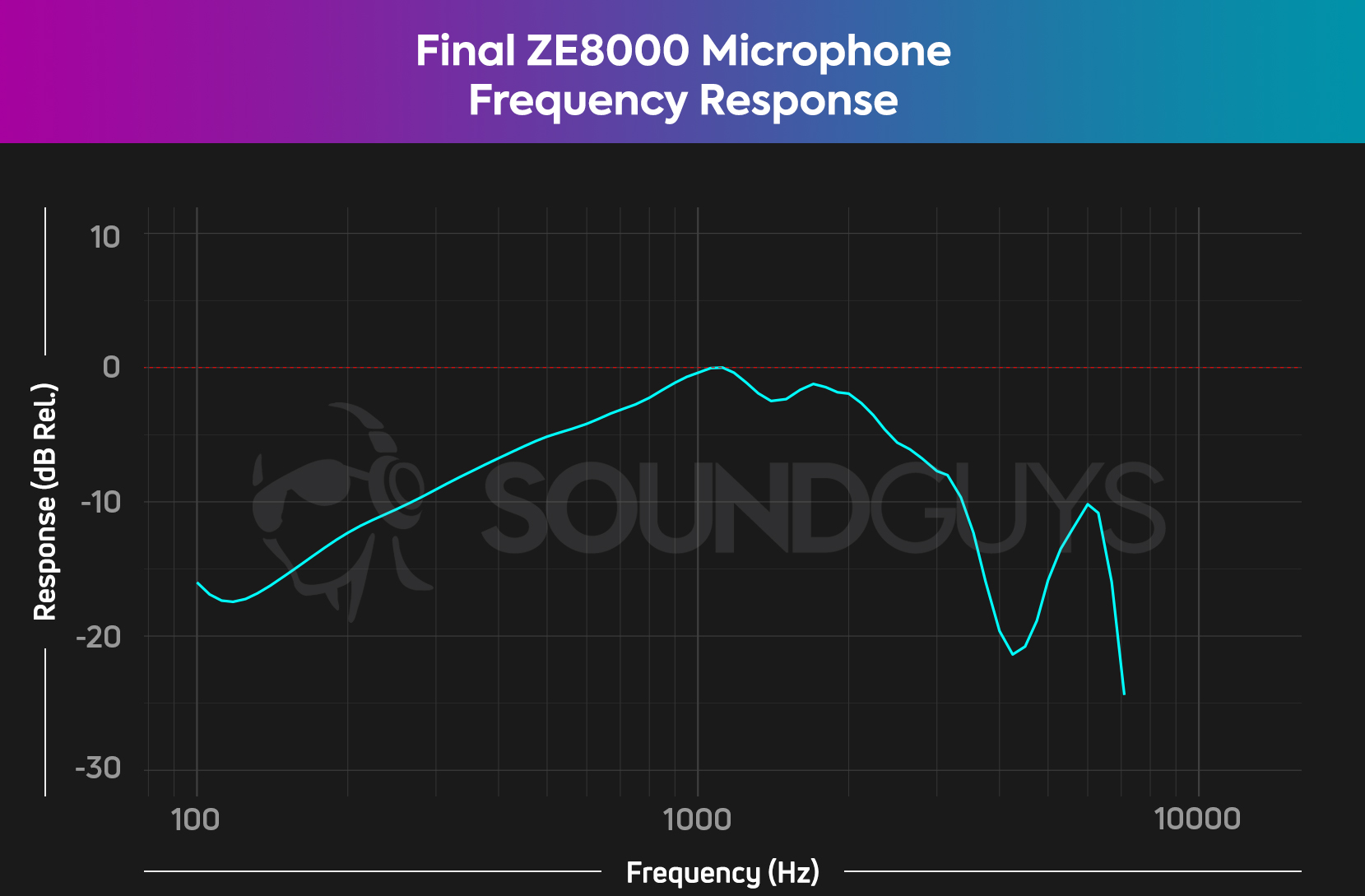
The Final ZE8000 mic focuses on mid-range frequencies around 1kHz, imposing an unpleasant character on your voice. The resulting audio is serviceable for phone calls but could be more natural sounding.
In office conditions, the ZE8000 doesn’t do much to reduce office clatter, which also affects speech quality negatively. With the introduction of street noise, the ZE8000 also struggles.
Have a listen for yourself.
Final ZE8000 microphone demo (Ideal conditions):
Final ZE8000 microphone demo (Office conditions):
Final ZE8000 microphone demo (Street conditions):
How does the microphone sound to you?
Should you buy the Final ZE8000?
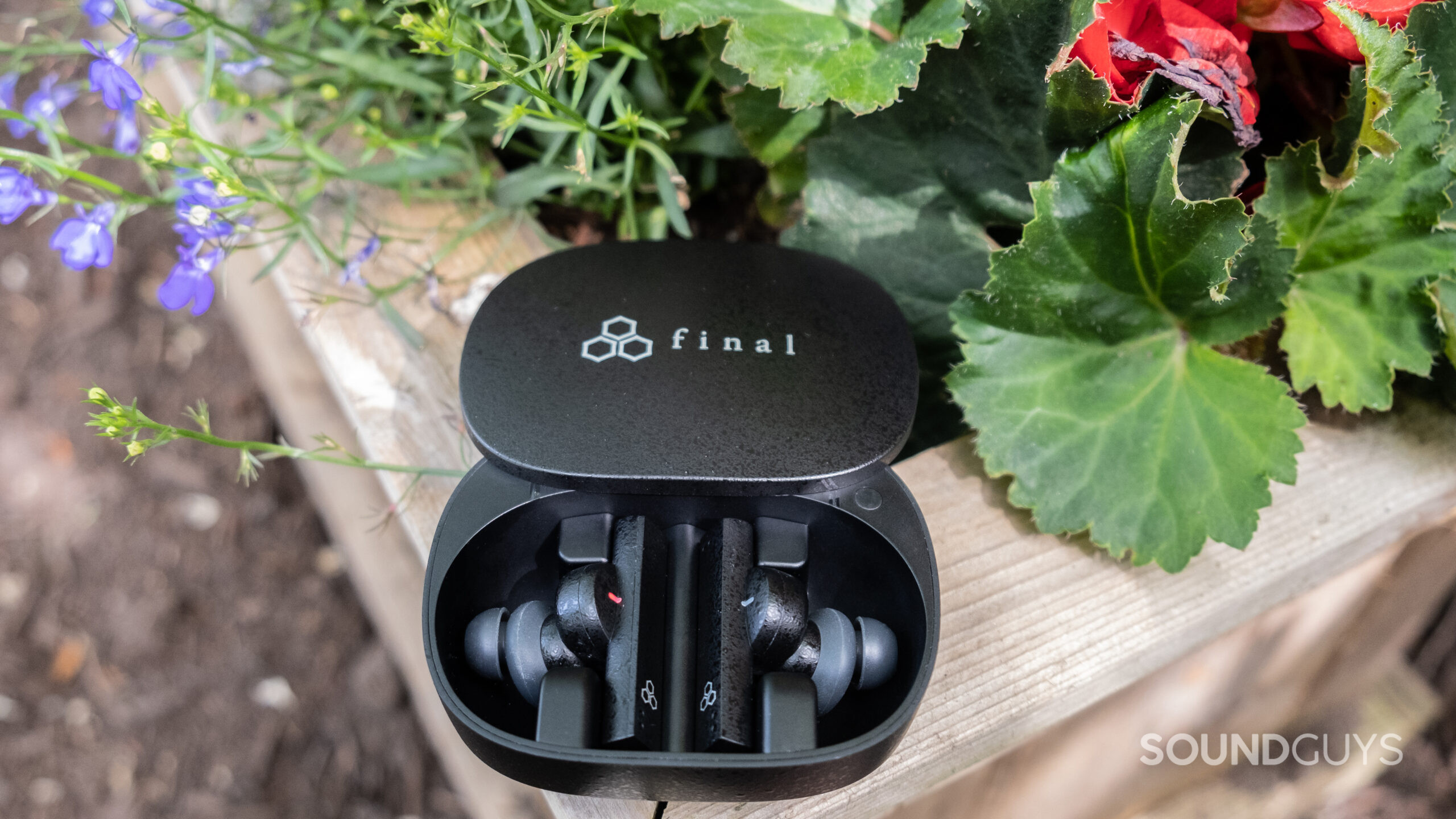
It’s difficult to recommend the Final ZE8000 with its fussiness and unimpressive noise canceling powers. The product needs some refinement. While the goals of the ZE8000 are worthwhile, including aptX with its “8K” DSP to yield better audio quality than bog standard true wireless buds, the execution isn’t close to a home run. It’s tough to suggest iPhone users pick up the ZE8000 because the Final CONNECT app works inconsistently on iOS. The Final ZE8000 cooperates better with Android devices.
Regardless of your device, the fit isolates less than we’d expect, drastically detracting from enjoying the sound quality in all but relatively quiet environments. The app’s equalizer is clear, and the ability to select specific frequencies is excellent, but the 3dB boost or cut gives you little room for adjustment. However, the earbuds and overall package feel well-made and look good. The ZE8000 deserves some attention for the case design and material choices, but the price is too high for the inconsistencies we encountered.
What should you get instead of the Final ZE8000?
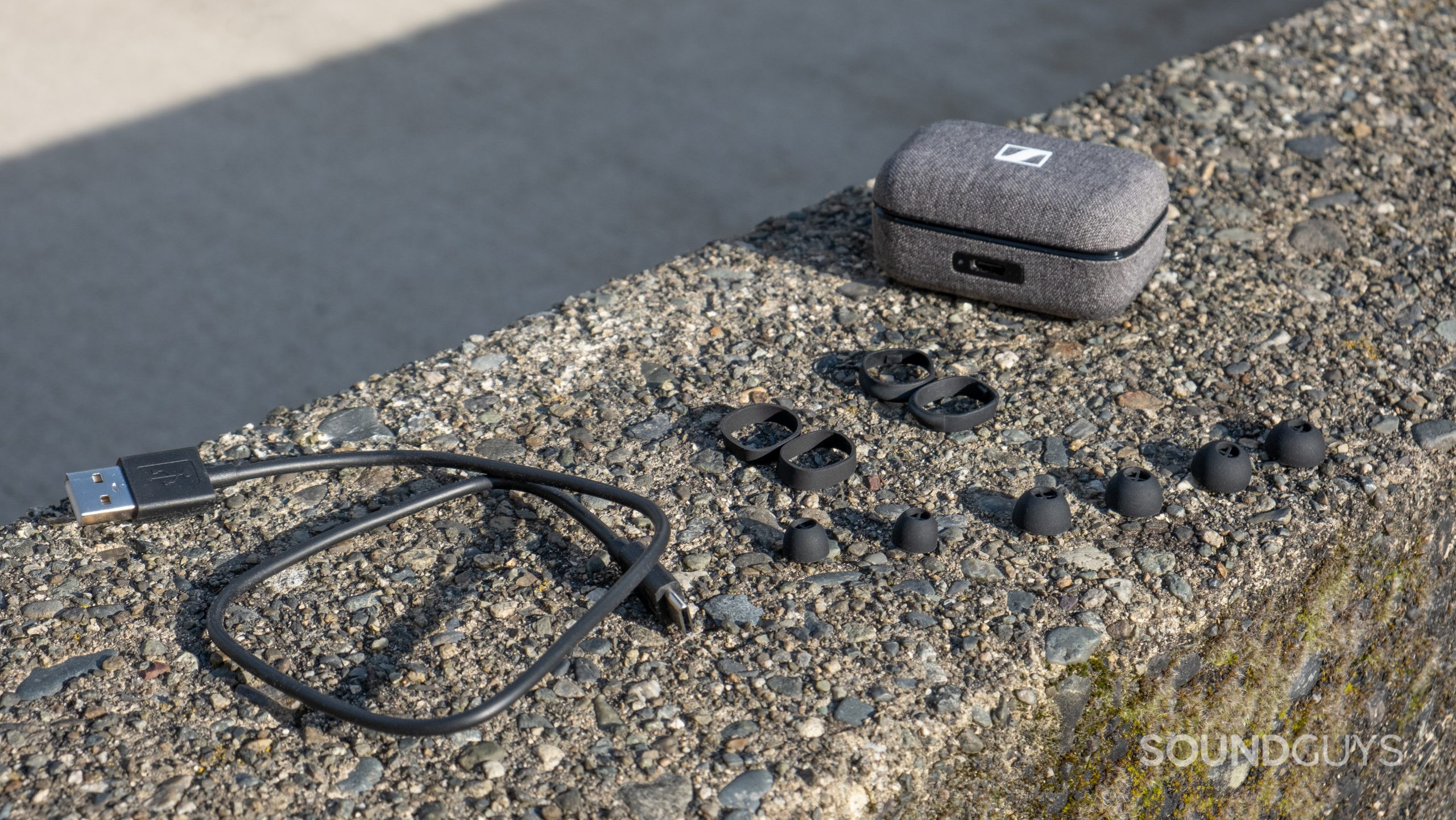
The IPX4-rated Sennheiser MOMENTUM True Wireless 3 should satisfy most listeners concerned with sound quality. It does a much better job with its frequency response and has far better ANC than the Final ZE8000. You have more control over your fit with separate stabilizers and ear tips. If the codecs supported by the ZE8000 appeal to you, the MOMENTUM True Wireless 3 buds use nearly the same selection of codecs over Bluetooth 5.2. You can pick them up for $199.95 at Amazon, making the Sennheiser an attractive alternative to the ZE8000.
Maybe you want all the bells as whistles. The Sony WF-1000XM4 uses Sony’s proprietary DSP enhancement called DSEE, an algorithm that “fills in” the missing audio affected by codec compression. Should the default tuning not suit you, the included app has a great EQ feature. The downside of the WF-1000XM4 is that your codec options are limited to LDAC, AAC, and SBC. LDAC is fine for most ears, but by design, the codec transmits at variable rates depending on your connection, which aptX does not do (aptX Adaptive does). These buds go for $178 at Amazon.
Finally, the Grell Audio TWS 1 go for only $99 at Drop. The buds are pretty sizeable but sound great with highly adjustable EQ, aptX Adaptive, and LHDC codecs for Android and AAC for iOS. So if you’re an audio enthusiast on a tighter budget, you might wonder what you’re missing for the dollars saved.
Frequently asked questions
To perform a factory reset, follow these steps.
- Unpair the Final ZE8000 and pop them back in the case (if they’re out).
- Press and hold the case button for 7 seconds until the lights of both buds emit purple. (The case’s button is on the right when you slide the lid open.)
- Wait until you see the buds re-enter pairing mode, as signaled by flashing blue and red lights.
- You will need to redo the pairing as if the buds are brand new.
